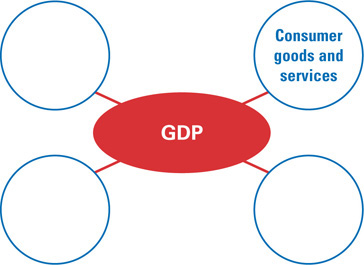Chapter 12 Assessment
Chapter Summary
A summary of major ideas in Chapter 12 appears below. See also the Guide to the Essentials of Economics, which provides additional review and test practice of key concepts in Chapter 12.
-
Section 1 Gross Domestic Product (pp. 301–308)
Gross domestic product (GDP) is the most important measure of a nation's economic performance. GDP changes in response to shifts in aggregate supply and aggregate demand. GDP does have its limitations, however. Other measures are often used in addition to GDP when evaluating a nation's economy. National income accounting is a system that collects macroeconomic statistics.
-
Section 2 Business Cycles (pp. 310–316)
A business cycle includes four phases: expansion, peak, contraction, and trough. Policymakers study business cycles to try to predict downturns in the economy and take steps to lessen their effects and speed economic recovery. Leading indicators help economists take the pulse of the macroeconomy.
-
Section 3 Economic Growth (pp. 318–324)
Economic growth is a steady, long-term increase in real GDP and often results in higher living standards. Capital deepening, saving and investment, population growth, government, foreign trade, and technological progress affect economic growth. Real GDP per capita is considered the best measure of a nation's standard of living.
Key Terms
Complete each sentence by choosing the correct answer from the list of terms below. You will not use all of the terms.
- gross domestic product
- price level
- capital deepening
- aggregate supply
- intermediate goods
- recession
- leading indicators
- business cycle
- gross national product
- _____ are goods used in the production of final goods.
- A _____ can be described as a period of macroeconomic expansion followed by a period of contraction.
- Economists use the term _____ to describe the dollar value of all final goods and services produced within a country's borders in a given year.
- _____ occurs when the amount of capital per worker increases.
- The _____ is the average of all prices in the economy.
- A prolonged economic contraction is known as a _____.
Using Graphic Organizers
-
On a separate sheet of paper, copy the web map below. Complete the web map by filling in the circles with components of GDP. You may add more circles.





